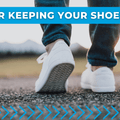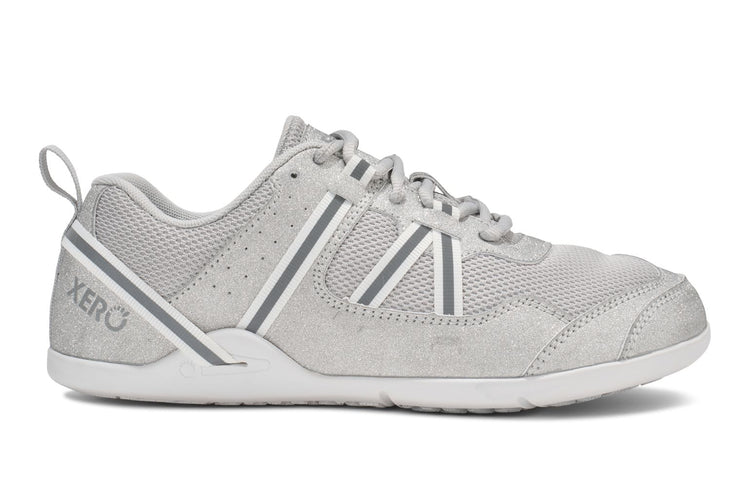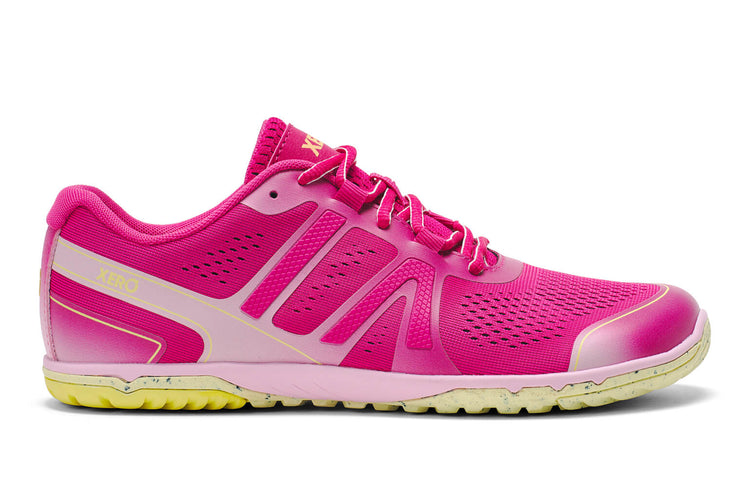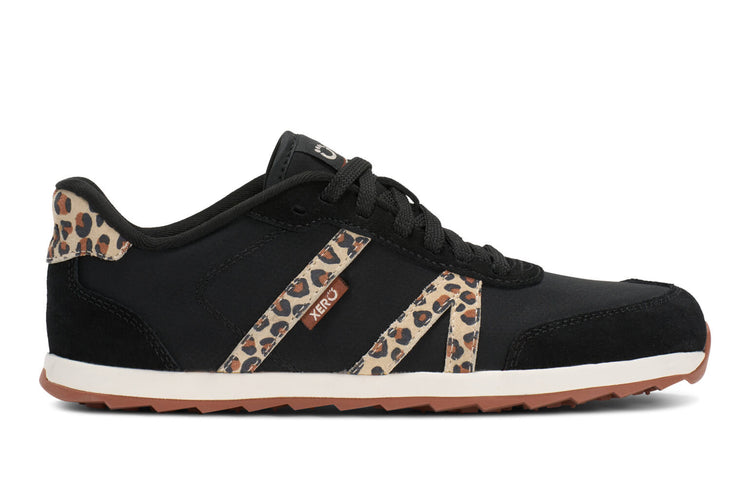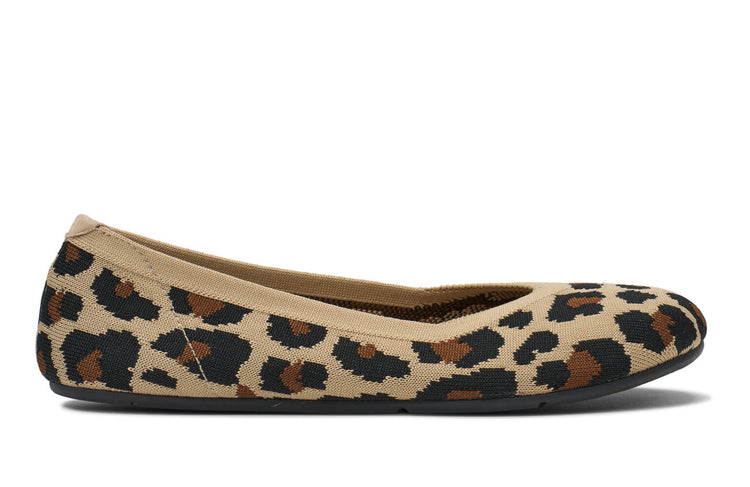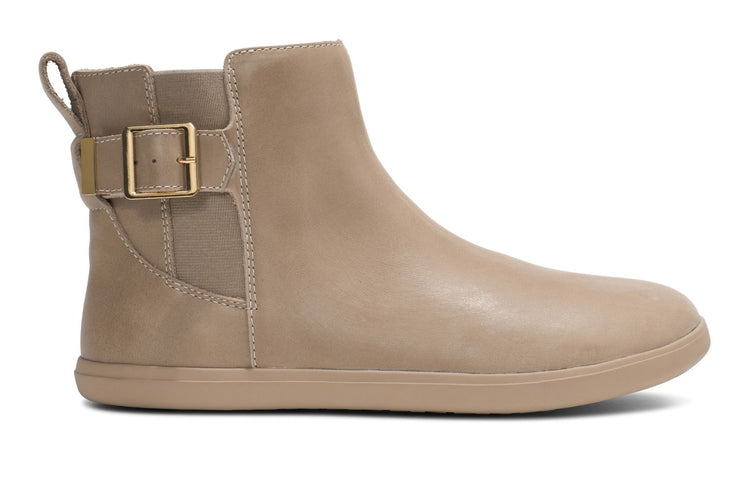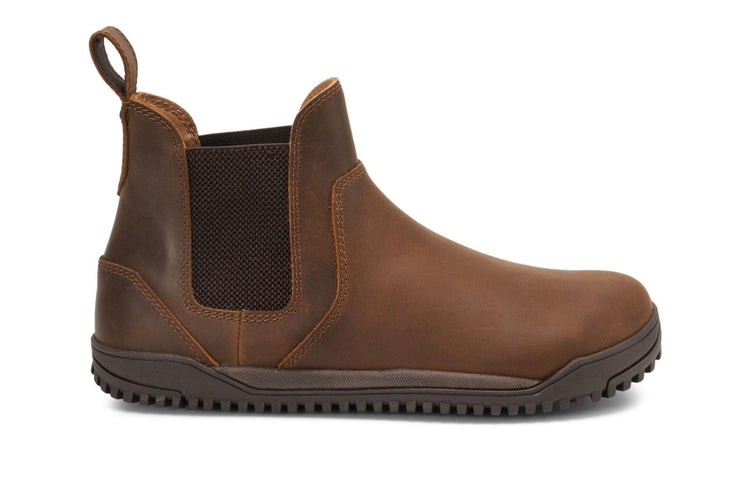“The Dream Shoe”: A Partnership with Xero Shoes & Born to Run 2 Authors
latest News
Barefoot Jason does it again (but in style, this time)
Barefoot Jason Robillard has done it again, running 2/3 of a 100 mile race in his Xero Shoes.But this time, he's got some extra fashion sense added:Now, some of you may know that I'm a sprinter. In fact, I ran "long-distance" at a meet last week when I did my first 200m race (and, for the sake of bragging, even though I totally lost it at the end, my time of 25.7 ain't bad for a 48 year old... I think I can get below 24 with a bit of work).So, to read Jason's great post about training for and running an ultra was just amazing to me.Enjoy it here: Burning River 100 mile Endurance Race Report by Jason Robillard
Long distance running in huaraches
About once a week I get a call or an email from someone who asks, "Can you run in Xero Shoes for long runs?"I usually point out to them that the Tarahumara are known for running ultra-marathons in huaraches, so, Yes.But some people respond, "Sure, but I'm not a Tarahumara Indian."True (but not necessarily relevant).So, how bout a hometown boy who just ran in his Xero Shoes huaraches... for SIXTY-EIGHT MILES!Read the rest of the thread about his run in the archive of the Runners World Barefoot Running forum
Xero Shoes on Boomer Alley Radio
Got 7 minutes for some laughs?Then you'll enjoy the interview I was invited to do on Boomer Alley Radio's "Better Mousetrap" show.You can hear it online on Saturday or Sunday:Saturday July 10 7 pm Pacific Time streaming on kfwb.com and live on KFWB NEWS TALK 980 AM (Los Angeles)Sunday July 11 4 pm Mountain Time streaming on radioconetwork.com and live on AM 1060 in Boulder/Denver metroENJOY!-Stevenp.s. I'll try to get a copy and put it up here after it airs.
Getting started with barefoot running
Imagine that you haven't lifted weights in a while... or ever.And imagine that you got the idea that you wanted to bench press 500 pounds.Would you go to the gym, put 500 pounds on the bar, and just go for it?Of course not. There's no way you could budge 500 on day one.Would you go to the gym and put, say, 100 pounds on the bar and lift it, over and over, until you felt tired... and then do a few more reps until you were wasted?I hope not.Would you take a small weight, like 20 pounds, and lift it for an hour or two?Boy, I wouldn't.But for some reason people think they can get into barefoot running with one of those plans.They think they can just whip off their shoes and replace one of their regular runs with a barefoot run. Or, worse, they think that even if they haven't run for a decade, it'll be fine to go for a 5 mile barefoot run. Or they get out for a barefoot run, feel some strain or pain in their feet or calves and think, "Oh, I'll just work through this, it'll be fine."And they pay the price.They wake up with freakishly sore calves or Achilles tendons. They get blisters. They get plantar faciitis. They get stress fractures.Look, over-training is over-training. Doing too much is doing too much.Especially with barefoot running, TAKE YOUR TIME. There's no rush to get to the point where you're running an ultramarathon every day for 1000 days in your bare feet. And there's no way to rush building up the strength in your muscles and ligaments and tendons, or to develop correct and efficient form.It happens as it happens. No sooner, no later.How long that'll be is a mystery. Maybe it only takes you a week or a month. Maybe it takes you a year.Who cares?First of all, it's not all-or-nothing. It's not like you won't be able to be barefoot and then, BAM, 6 months from now you can! It's a process. Maybe today you can only run 100 yards and then need to ice your feet for 3 days. That's fine. In a month, guaranteed, you'll be doing more. And a month after that, you'll be doing even more.Secondly, nobody is telling you to throw away your shoes the moment you realize you want to become a barefoot runner. Keep your shoes. Enjoy your shoes. And look forward to when you don't want or need them.But, please, give yourself time -- the amount of time that YOU need -- to make the transition.Honestly, there's enough to learn and experience and benefit from if all you ever do is an occasional 1 minute jog without shoes.I hate to toss out "prescriptions for living," but in this case I can't think of any better way to say it than, "Enjoy the journey... because there isn't really a goal."The content of this post does not constitute and is not intended to be a substitute for professional medical advice, diagnosis or treatment. Always seek the advice of a physician or other qualified health provider with any questions or concerns you may have about your health or a medical condition." to the bottom of the blog post.The content of this post does not constitute and is not intended to be a substitute for professional medical advice, diagnosis or treatment. Always seek the advice of a physician or other qualified health provider with any questions or concerns you may have about your health or a medical condition.
Another way to tie huaraches Tarahumara running sandals
Raymond Mack devised a "thong-style" method of tying huaraches running sandals. I haven't tried out the tying method yet, but this video makes me want to go to the beach ;-)
HBO Real Sports on Barefoot Running - Right or Wrong?
This week's (5/18) HBO's Real Sports with Bryant Gumbel did a feature on barefoot running.Did they get it right, or not?Well, overall, I'd say they were right on... with one exception I'll mention in a moment. They repeatedly pointed out that there are no studies that prove barefoot running reduces injuries, nor are there studies that show running in shoes causes them. They emphasized that if you want to make the transition to barefoot, you should start slow -- run for a short amount of time and distance (and build up slowly) to let your body learn to handle the new demands Chris McDougal repeatedly qualified his statements with "I believe..." And it's true, those of us who have moved to barefoot have our anecdotal evidence that we use to support us. What they missed: The point that Olympic athletes wear shoes is, in certain ways, irrelevant. Why? Because 99.9% of us are not Olympic athletes putting in the mileage they do, or running the speeds they do. And because if you look at their form, it's closer to barefoot than your average heel-striking jogger. The Nike Free is far from being a "barefoot shoe." Sure it flexes really well (and, full disclosure, I have 3 pair that I used to love wearing... but it's been a year since I last put mine on), but it has a big, padded, wide heel. Ditto on the Vibram Five Fingers (I love how they pronounced it correctly -- VEE-bram!). The VFFs have a lot more structure and support, plus a thickened sole on the ball of the foot and heel. And, of course, the biggest thing they got wrong was right in front of their face! HUARACHES! They talked about the Tarahumara running in huaraches, but when they gave advice about protecting yourself from things you could step on (or in!) in our modern world, they neglected to mention huarache running sandals (let alone Invisible Shoes... even though they had some film of runners in I-shoes).Ah, well... next time ;-)Anyone else see the show? What did you think?The content of this post does not constitute and is not intended to be a substitute for professional medical advice, diagnosis or treatment. Always seek the advice of a physician or other qualified health provider with any questions or concerns you may have about your health or a medical condition.
A new way to tie your huarache running sandals
Sonja came up with this novel way to tie your huarache running sandals that doesn't involve a cord coming up between your toes. As she points out, one potential drawback is that your foot can more easily shift forward on the sole compared to what happens when you have the cord between your toes... but, especially for people who have real trouble with that toe cord, or with the knot, you may want to try this out. I LOVE that people are getting so creative with huaraches!
Does knowing how to make huaraches running sandals give you super powers?
Having now made hundreds of pairs of huarache barefoot running sandals, and having spoken with many others who've done the same, I'm here to report a startling fact.Knowing how to make your own shoes -- even making minimalist running shoes like Tarahumara-style huaraches -- definitely gives you super powers.Oh, I don't mean the ability to leap tall buildings in a single bound (or even two or three bounds), or the power to fly, or the fun of invisibility... instead, I'm talking about something much super-er:The knowledge that you can make your own shoes!If you haven't yet made your own running sandals, you probably don't know what I mean. You probably don't get why I would say that being able to make some running sandals is a super power.But, I assure you, that's only because you haven't done it yet.After I made my first pair of huaraches, and was walking around in shoes that I MADE with my own 2 hands, I was overcome by a profound sense of self-reliance, a comforting knowledge, a feeling of value... just knowing that, if things get bad, I can make shoes for myself and others.And in a way that I can't explain, that knowledge felt like having a super power.I don't have to explain it to other people who've made their own barefoot running shoes; they've told me they have had a similar experience.It's like growing your own food... there's something really comforting about knowing you can take care of one of your basic needs.So, if you haven't yet, I highly encourage you to see what I mean and develop the super power of making your own huaraches running sandals. And, honestly, I'm not just saying that because I'm in the biz... it's such a fun feeling, I want you to have it yourself. (But, hey, if you just want me to increase my super powers and order custom-made huaraches, that's okay with me ;-) )Anyone else want to chime in about what it was like when you developed your super power?The content of this post does not constitute and is not intended to be a substitute for professional medical advice, diagnosis or treatment. Always seek the advice of a physician or other qualified health provider with any questions or concerns you may have about your health or a medical condition.
Barefoot Jason's Xero Shoes Pre-view
Here's a "pre-review"from Barefoot Jason of our original Vibram Cherry DIY Kit back when we were still called Invisible Shoe! -- http://barefootjason.blogspot.com/2010/04/invisibleshoescom-huaraches-first.html Invisibleshoe.com Huaraches First Impressions and Kickoff to 100 Miler Training I received my invisibleshoe.com huaraches yesyerday. I have been communicating with Steven Sashen for a few months as I love supporting anyone that is contributing to the barefoot/minimalist shoe movement. Steven started invisibleshoe.com to produce custom made huaraches and do-it-yourself huarache kits. I'll give more details about him in my full review in a few days. The huaraches I received are made of 4mm Vibram Cherry rubber and polypropylene and nylon lace. I chose neon pink for the lacing. Why? I thought it would be fun. Based on the looks I got while on my run today, "fun" may be the wrong word. :-) My run today was a 10 miler on gravel roads... my most difficult test of a minimalist shoe. The huaraches performed well. I was surprised they worked as well as they did. I will give much more detail in my full review, but Stevens huaraches have vaulted themselves to the upper echelon of my growing stable of minimalist shoes. The run itself was the second of a 20 mile/10 mile back-to-back. Yesterday's 20 miler was at about ultra pace and went well. Today's run was more of a near-tempo run. I managed to finish the 10 miles with a 7:42 pace (1:17 total time.) Fitness for this early in the year is very good. If I can maintain steady improvement, I should be in an excellnt position to finish well at Burning River at the end of July. Thanks Jason! (and good luck with the training/racing!)
Running Sandals for Health!
Yet another study showing how running sandals and barefoot running could be better for your body! Flip-flops and sneakers with flexible soles are easier on the knees than clogs or even special walking shoes, a study by Rush University Medical Center has found. And that's important, because loading on the knee joints is a key factor in the development of osteoarthritis. The study has been published online in the journal Arthritis Care & Research. "Traditionally, footwear has been engineered to provide maximum support and comfort for the foot, with little attention paid to the biomechanical effects on the rest of the leg," said Dr. Najia Shakoor, a rheumatologist at Rush and the primary author of the study. "But the shoes we wear have a substantial impact on the load on the knee joints, particularly when we walk." "Our study demonstrated that flat, flexible footwear significantly reduces the load on the knee joints compared with supportive, stable shoes with less flexible soles." Osteoarthritis is the most common form of arthritis and a significant source of disability and impaired quality of life. A higher-than-normal load on the knees during walking is a hallmark of the disease, associated with both the severity of osteoarthritis and its progression. Shakoor and her colleagues analyzed the gait of 31 patients with symptoms of osteoarthritis in the Rush Motion Analysis Lab while they walked barefoot and with four popular shoe types: Dansko clogs, which are often worn by healthcare professionals who have to be on their feet much of the day; Brooks Addiction stability shoes, which are prescribed for foot comfort and stability; Puma H-Street shoes, a flat athletic shoe with flexible soles; and flip-flops. The loads on the knee joints differed significantly depending on the footwear. For the clogs and stability shoes, the loads on the knee joints were up to 15 percent greater than with the flat walking shoes, flip-flops or barefoot walking. Knee loading was roughly the same whether the subject wore flips-flops or walked barefoot. "Currently, knee braces and wedged orthotic shoe inserts are used to relieve the load on the knee joints of patients with osteoarthritis, but everyday footwear is also a factor to consider. The results in our study demonstrate that the reduction in load achieved with different footwear, from 11 to 15 percent, is certainly comparable to reduction in load with braces and shoe inserts ," Shakoor said. According to Shakoor, several aspects of footwear affect the joint loading. "Heel height is one factor, and may explain why the stability shoes and clogs in our study, both of which had higher heels, produced greater knee loads," Shakoor said. "Stiffness is also a factor. We've shown in earlier studies that barefoot walking is associated with lower knee loads than walking with conventional footwear. It may be that the flexible movement of the bare foot is mechanically advantageous. The natural flex of the foot when it contacts the ground probably attenuates the impact on the joint, compared to the artificial 'stomping' movement created by a stiff-soled shoe." In the present study, Shakoor said, flip-flops and the walking shoe were flat, flexible and lightweight and seemed to mimic the mechanics when walking with bare feet. "Clogs and stability shoes, conventionally believed to provide appropriate cushioning and support, actually increased the loading on the knee joints, as opposed to shoes with less 'support,' flatter heels and more flexibility," Shakoor said. Shakoor cautioned, however, that knee loading is not the only consideration in any clinical recommendations based on her study. "For the elderly and infirm individuals, flip-flops could contribute to falls because of their loose-fitting design. Factors like these need to be taken into account," Shakoor said. Other researchers at Rush involved in the study were Dr. Mondira Sengupta, Dr. Kharma Foucher, Markus Wimmer, PhD, Louis Fogg, PhD, and Dr. Joel Block. Funding was provided by a grant from the National Institute of Arthritis and Musculoskeletal and Skin Diseases, part of the National Institutes of Health. Source Rush University Medical Center, Chicago, Illinois The content of this post does not constitute and is not intended to be a substitute for professional medical advice, diagnosis or treatment. Always seek the advice of a physician or other qualified health provider with any questions or concerns you may have about your health or a medical condition.
The Tarahumara Go Running for DAYS
About once or twice a week, someone emails me and asks: Doesn't the string between your toes hurt or cause blisters? After crafting a number of long-winded answers, I finally realized the simplest one: Remember, the Tarahumara Indians run in huaraches for hours and hours... sometimes for DAYS at a time. Clearly, you couldn't spend hours, or days, in barefoot running sandals if they caused damage to your feet. That said, it doesn't mean you can just put on some Invisible Shoes and go for a 24 hour run without a problem. In the same way that you wouldn't wear a new pair of running shoes for the first time on a 20 mile run, you don't want to wear your huaraches too much until you know you've adjusted to them. And "adjusting to them" means: Finding the right tension in the lacing Adjusting your stride since you can't land hard on your heel Remembering that wearing huaraches is a LOT like being barefoot, but with a surface that's really comfortable What allows the Tarahumara (or anyone who is comfortable in huaraches) to go for a long time without any issues is a combination of factors. Since I'm in the mood for a list, let me list them: ;-) With proper barefoot running form, you don't put a lot of horizontal force on the ground. You don't "pull" with your feet the way you can do with running shoes, or even with something like flip-flops. So, you don't create the kind of force that leads to friction and abrasion. Since huaraches don't offer the kind of padding that shoes or flip-flops or other sandals do, you're less likely to overstride (whether you're walking or running) and, again, you have less horizontal/abrasion-causing force. Oh, and you're less likely to do it, because overstriding HURTS... so you quickly get the hint to CHANGE SOMETHING! ;-) I'm sure I left something off the list... suffice it to say, there's nothing inherent in huaraches that should cause you any pain. Like most things in life, the problems arise when we overdo it, don't listen to the signals from our body, or choose to argue with reality instead of adjusting to it. The content of this post does not constitute and is not intended to be a substitute for professional medical advice, diagnosis or treatment. Always seek the advice of a physician or other qualified health provider with any questions or concerns you may have about your health or a medical condition.
Will Barefoot Running Heal My Injuries?
As barefoot running and walking (and hiking, and kayaking, and anything else you can do barefoot) become more popular, the one question that comes up more and more is:Will being barefoot or in Xero Shoes cure me of my problems?And the list of problems includes: Flat feet High arches Leg length differences Plantar fasciitis and heel pan Achilles tendonitis Pain in the ankle, foot, knee, hip, back ... and a LOT more This is a good question.And if you hang out in the barefoot world, you will definitely hear from someone who says that being barefoot cured them of pretty much anything and everything.So, will being barefoot cure you of what ails you?The short answer is:Who knows?It's not as simple as: take off your shoes and you'll be instantly cured of every injury you've ever had, able to run without effort for days at a time, and awarded the key to every city you breeze through on your double-marathon-a-day cross country jog.Running and walking barefoot is an invitation.An invitation to, first, listen to the sensations in your feet and the rest of your body. And then, secondly, an invitation to change what you're doing based on that information.It's not a contest to see if you can endure pain until "your feet toughen up" nor is it an instant cure-all.(For the record, if you check out the feet of any good barefoot runner, they are NOT calloused, blistered, or tough. And, for the record, I'm not talking about Kenyans or Tarahumara who grow up doing everything barefoot... that's a completely different situation than running for 5-50 miles a week in a controlled fashion.)So, back to the question at hand...If you listen to your body (that is, pay attention to when something is uncomfortable), and adjust your form, and continue to explore the question, "How can I make this easier, lighter, softer, faster?" then guess what you'll probably clear up:Any problems or injuries you had from not doing the above.If your injuries and aches and pains were caused by bad form, then changing your form to something better could heal what ails you. Seems pretty obvious, yes?But, again, this doesn't happen just because you've taken off your shoes. It's possible to be barefoot and still do everything wrong, namely, not listening, and not changing.Going barefoot, or wearing Xero Shoes gives you an opportunity to listen, to adapt, to explore, and to discover what can happen for you... if you take the opportunity.Some medical professionals (most of whom, it seems, have never run barefoot at all, let alone on a hard surface) will argue, "There are no studies that show that PROVE the value of barefoot running!"Absolutely correct.There are also no studies that prove it causes more problems than running in shoes, even though some medical professionals make that claim.And it seems that claim is based, as far as I can tell, from their lack of understanding of statistics and sample bias -- that is, they only see the ones who are injured, not the ones who aren't... and don't know the total number of barefoot runners so they can't tell if this is more/less problematic than shod running. Plus, again, it's not just a question of whether someone is running barefoot (or minimalist), but HOW they're doing it. Besides, there's no studies that show running shoes prevent injuries either!Look, I'm not a die-hard "Everyone must be barefoot!" guy. Granted, since 2009 I've spent less that 7 days in any footwear other than Xero Shoes or my sprinting spikes (I'm a competitive sprinter). And, yes, running barefoot did improve my form and eliminate a number of injuries that had plagued me. I used to have flat feet and I wore orthotics for 30+ years... now I no longer have flat feet and love that I'm not spending $2-500/year on foot inserts.But "barefoot vs. shoes" is still a conversation. And a new one at that.There's been some suggestive research, but nothing definitive. And this is more a function of how hard it is to do good research than anything else.I hope the conversation can continue long enough, and with enough attention that we have some real answers, answers that help people run and walk with lightness, freedom, and fun.The content of this post does not constitute and is not intended to be a substitute for professional medical advice, diagnosis or treatment. Always seek the advice of a physician or other qualified health provider with any questions or concerns you may have about your health or a medical condition.



